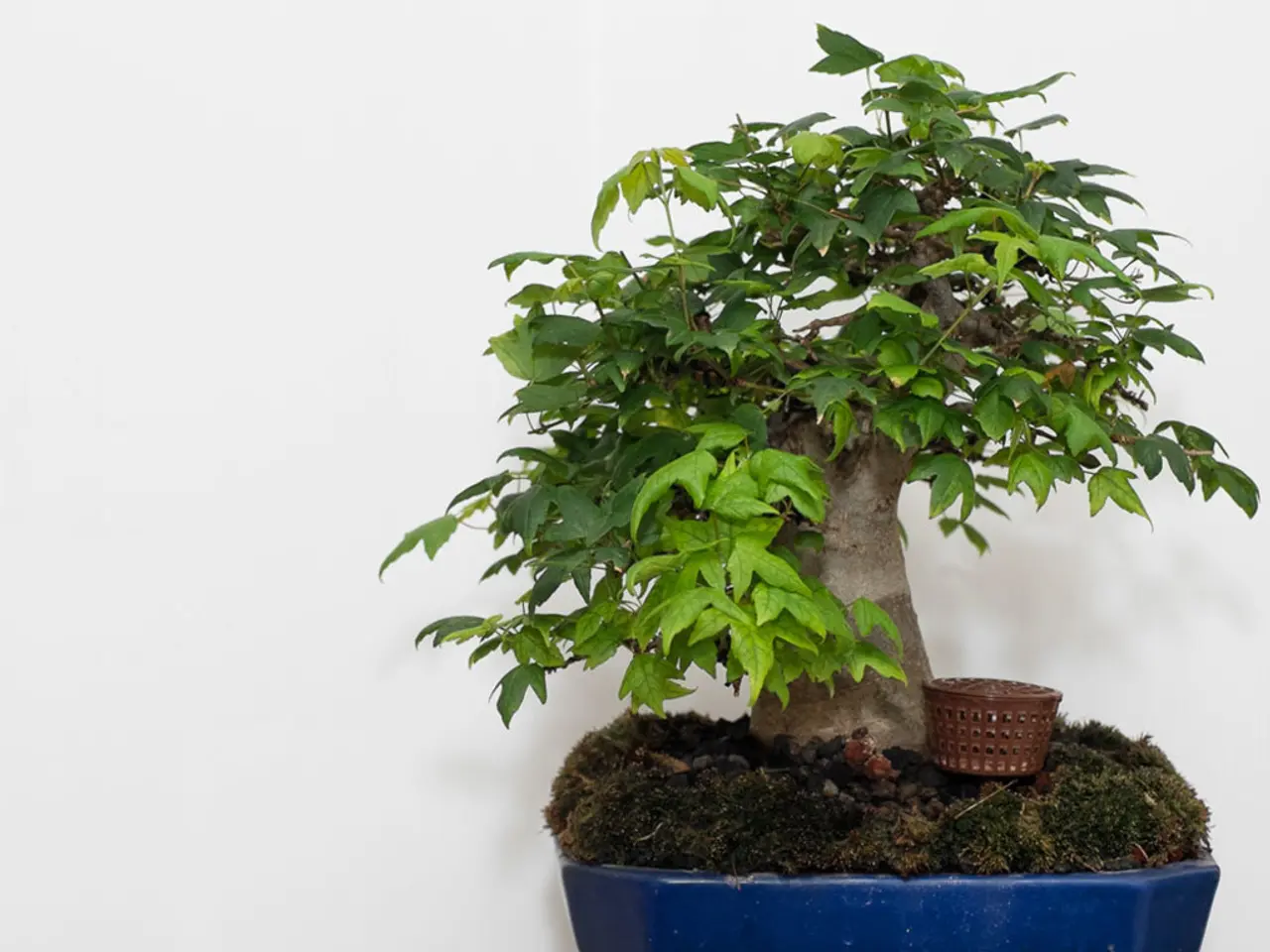Bonsai Leaf Dropping: Exploring Root Causes and Solutions
Preventing and Managing Bonsai Leaf Loss
Bonsai trees, with their delicate beauty and intricate shapes, require careful attention to maintain their health and vibrancy. One common issue that bonsai owners may encounter is leaf loss. This article explores the common causes and solutions for preventing and managing bonsai leaf loss.
Common Causes of Bonsai Leaf Loss
- Sudden temperature changes: Exposure to air conditioning or drafts can cause leaves to fall off, disrupting the tree's metabolic processes.
- Overwatering or poor drainage: Leading to root rot and yellowing or dropping leaves.
- Insufficient light: Causing yellowing and leaf loss.
- Pest infestations: Sap-sucking pests like aphids or vine weevils weaken the tree and cause leaf yellowing and loss.
- Low humidity or dry air: Stressing the bonsai and leading to leaf drop.
- Natural leaf cycle: Older leaves fall off as new leaves grow, which is normal and not a cause for concern.
Common Solutions to Prevent or Manage Bonsai Leaf Loss
- Maintain stable temperature: Avoid sudden changes and air conditioning drafts.
- Water properly: Water only when the top inch of soil is dry and ensure good drainage to prevent root rot.
- Provide adequate light: Ideally bright indirect sunlight to support healthy foliage.
- Control pests: Use neem oil or mild insecticides to manage sap-sucking insects.
- Increase humidity: Misting or using humidity trays if the air is dry.
- Repot if necessary: Improve soil drainage and replace compacted or poor soil.
In addition, leaf loss from too much direct light, excessive heat, or over-fertilization can occur but is less common in bonsai care compared to other plants.
Environmental Adjustments
Environmental adjustments such as reducing humidity, improving air circulation, and maintaining ideal temperatures can help create an inhospitable environment for bacterial growth in bonsai trees.
Physical Damage and Injury
Physical damage and injury, whether accidental or intentional, can cause immediate and irreversible harm to bonsai trees, leading to leaf loss and potentially long-term damage to the tree's structure and overall health.
Disease Transmission
Contact with infected plant material can facilitate disease transmission in bonsai trees. In waterborne bacterial diseases, the vascular system can be rapidly infected after entering through open wounds or natural openings.
Transplant Shock
When a bonsai tree is transplanted, it triggers a stressful adjustment period that can manifest as leaf loss, a phenomenon commonly referred to as transplant shock. Early detection and prompt intervention are vital for mitigating the damage caused by viral diseases in bonsai trees.
Maintaining Ideal Humidity Levels
Misting a bonsai daily can be beneficial for maintaining ideal humidity levels, but be cautious not to over-mist, as this can lead to root rot and other issues. Indoor bonsai trees require more nuanced watering, as they're shielded from natural rainfall and evaporation, necessitating more frequent, albeit gentle, hydration to thrive in their controlled environment.
Poor Soil Quality and pH Imbalances
Poor soil quality and pH imbalances can substantially contribute to leaf loss in bonsai trees.
Viral Diseases
Viral diseases in bonsai trees can spread rapidly and silently, often manifesting as subtle changes in foliage color, shape, or texture before sudden and severe defoliation.
Caring for Bonsai After Transplantation
During the critical period after transplanting, it is vital to provide the bonsai with superior care, certifying its basic needs are met and minimizing any additional stressors.
In summary, preventing bonsai leaf loss involves careful attention to watering, temperature, light, humidity, soil health, and pest control. By understanding the common causes and implementing appropriate solutions, bonsai owners can help their trees thrive and maintain their beautiful, miniature landscapes.
- Maintaining a science-backed understanding of bonsai care is crucial in preventing and managing leaf loss.
- Sleep on the proper methods for watering, as overwatering can lead to medical-conditions like root rot.
- Workplace-wellness initiatives promoting fitness-and-exercise and nutrition can contribute to a healthier overall approach to bonsai care.
- Chronic diseases, such as bacterial infections, can manifest in bonsai trees, causing leaf loss; CBD oils might offer a potential treatment for these conditions.
- Respiratory conditions, like sap-sucking pest infestations, can affect bonsai trees, leading to coughing and sneezing of leaves.
- Digestive health is essential for maintaining the balance of nutrients in the soil, ensuring healthy, vibrant growth.
- Eye health is crucial when examining bonsai trees for signs of disease, as well as monitoring their exposure to light levels.
- Hearing about common causes and solutions for leaf loss can help bonsai owners make informed decisions for their trees' well-being.
- Health-and-wellness experts recommend adding therapies-and-treatments like humidity trays to support the overall health of bonsai trees.
- Sexual-health concerns such as infection from infected plant material can lead to disease transmission in bonsai trees, necessitating caution when handling and pruning.
- Autoimmune-disorders like transplant shock can cause stress and leaf loss in bonsai trees, requiring early detection and prompt intervention.
- Climate-change and environmental-science research can help bonsai owners adapt to evolving conditions and minimize the impact on their trees.
- Mental-health matters, even for bonsai trees; stress can lead to leaf loss, so maintaining a calm and stable environment is essential.
- Mens-health extends to the care of bonsai trees, with fathers often involved in encouraging fitness-and-exercise, nutrition, and hobbies like bonsai cultivation.
- Skin-care and skin-conditions are important factors in bonsai care, as direct exposure to extreme temperatures or chemicals can damage the tree's leaves and overall health.




